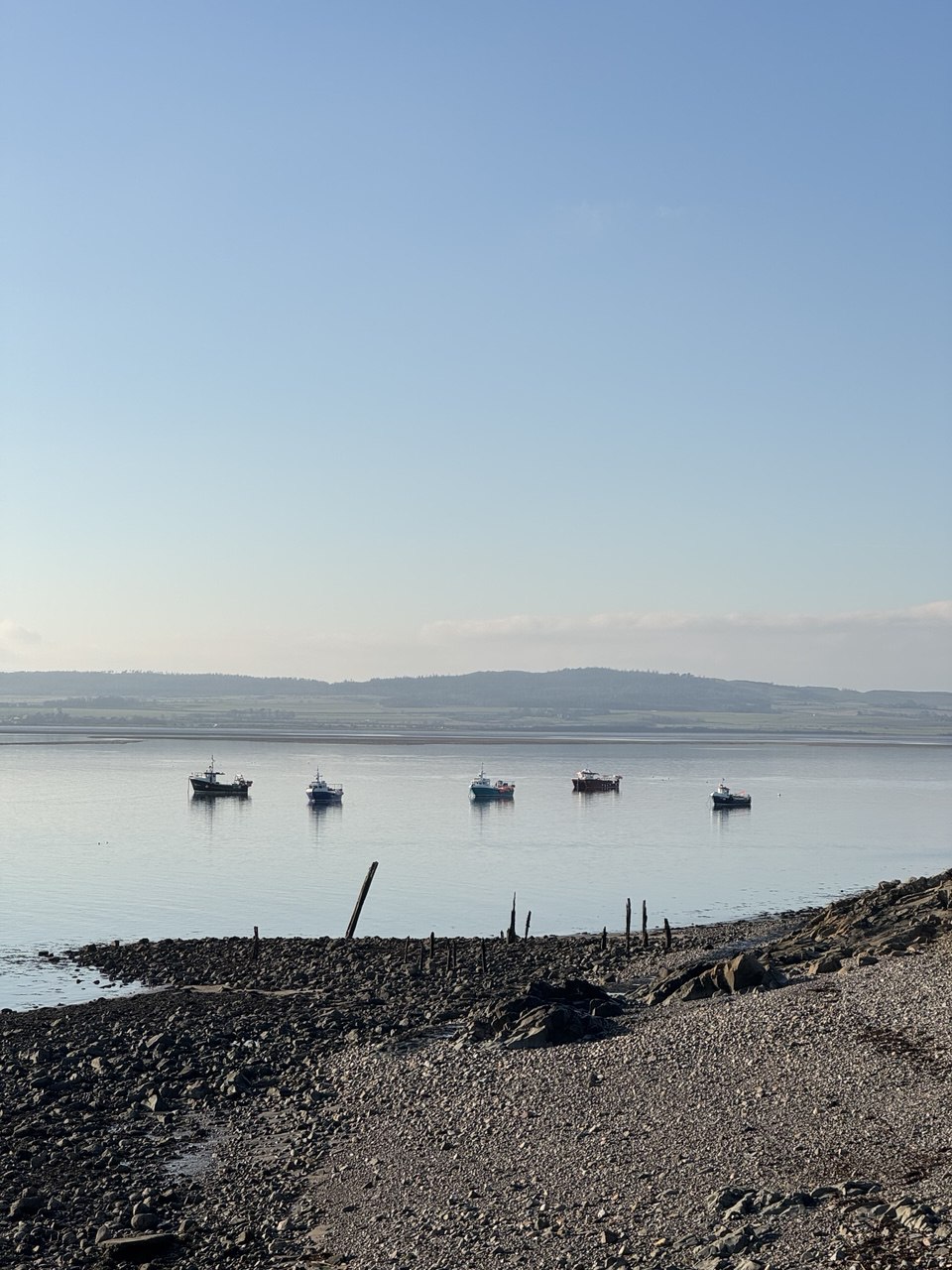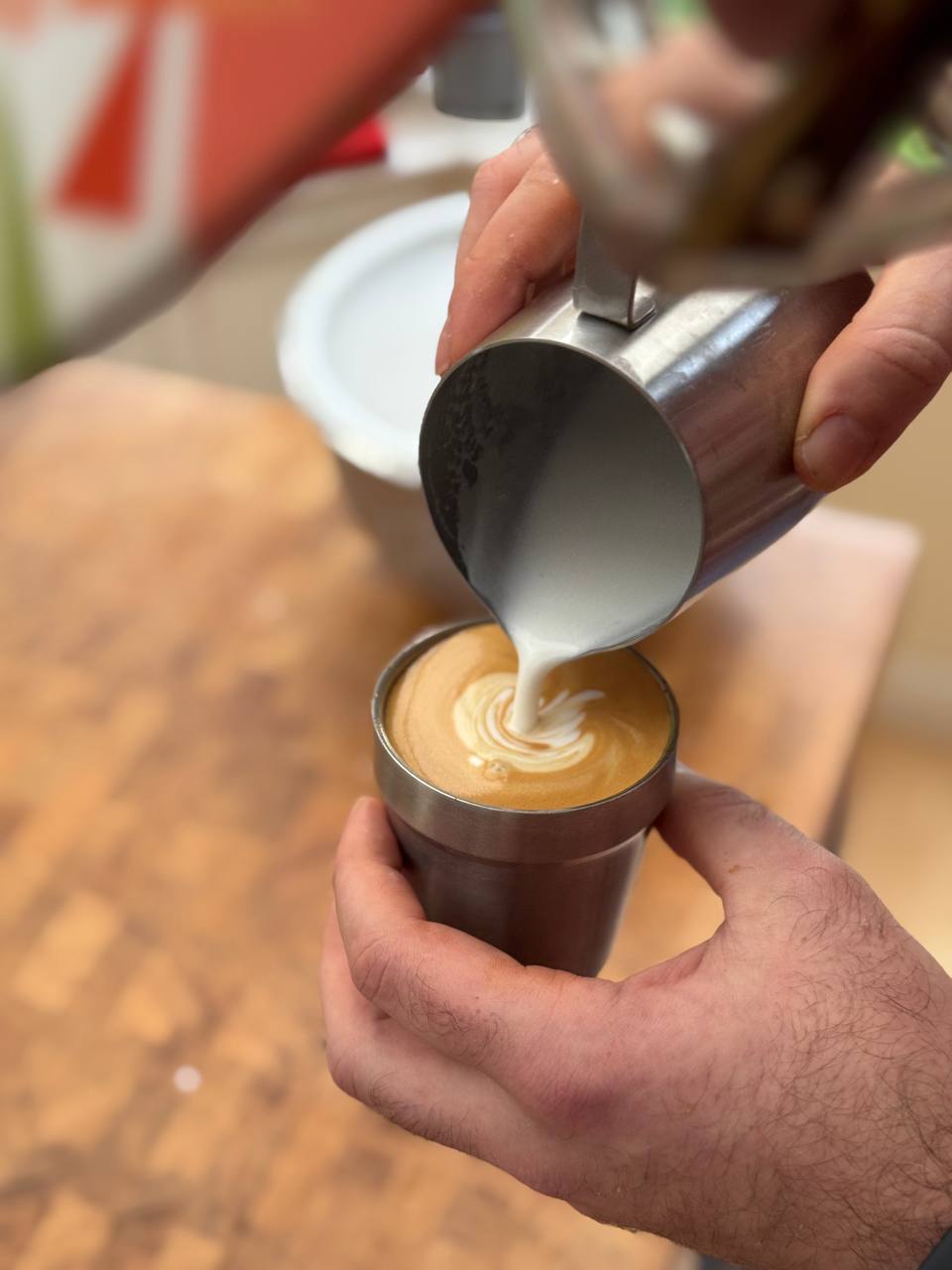|
Your weekly crème de la crème of the Internet is here!
26.11.2024 (read in browser)
This is the free monthly edition of the newsletter. If you want to receive every weekly edition, plus access the full archive of both free and paid newsletters, subscribe here.
In case you missed it, the last three paid editions included:
-
#225 on South West Coastal 300, where I drive around most southern part of Scotland, uncover Edinburgh railway maps, and learn the language of stamps.
-
#226 on Cantabria, where I go to Basque country but land in Cantabria, automate heating with Home Assistant, and share Lermontov family's origins.
-
#227 on DIY, where I tap into my hardware engineering skills and replace my car's 20 year old radio with a CarPlay tablet, wonder why cows in paintings are rectangular, and question Apple's approach to rebooting inactive phones.
Don't miss out on future newsletters – upgrade now to get access to all of them.
On target shooting
It's a bit early for New Year resolutions, but I tend to pick up a new thing every year, whether it's driving or cheese making. Sometimes I do it very early in the year, and sometimes almost before it ends, but this time I started getting ready the year before.
In the past years as I get better at cooking meat, eventually I ended up butchering whole carcasses, which is the best way to do justice to all parts of the animal, and while it's way better than buying plastic-wrapped steaks in supermarkets, I figured I could do better.
Deer overpopulation is a big issue in Scotland (and in the UK in general), as they don't have any natural predators, and are destroying forests by eating young shoots, so deer is actively managed by culling. Folks don't call it "hunting" or "shooting" for historical reasons and to avoid unneeded associations with posh lads in tweed and with shotguns, but deer stalking is a big thing here.
It's pretty much impossible to get into without connections though, and also without learning how to shoot in the first place, so I am slowly getting into target shooting, which is a sport, so no deer, a tightly strapped to the hand rifle, and an even slower progression towards precision:
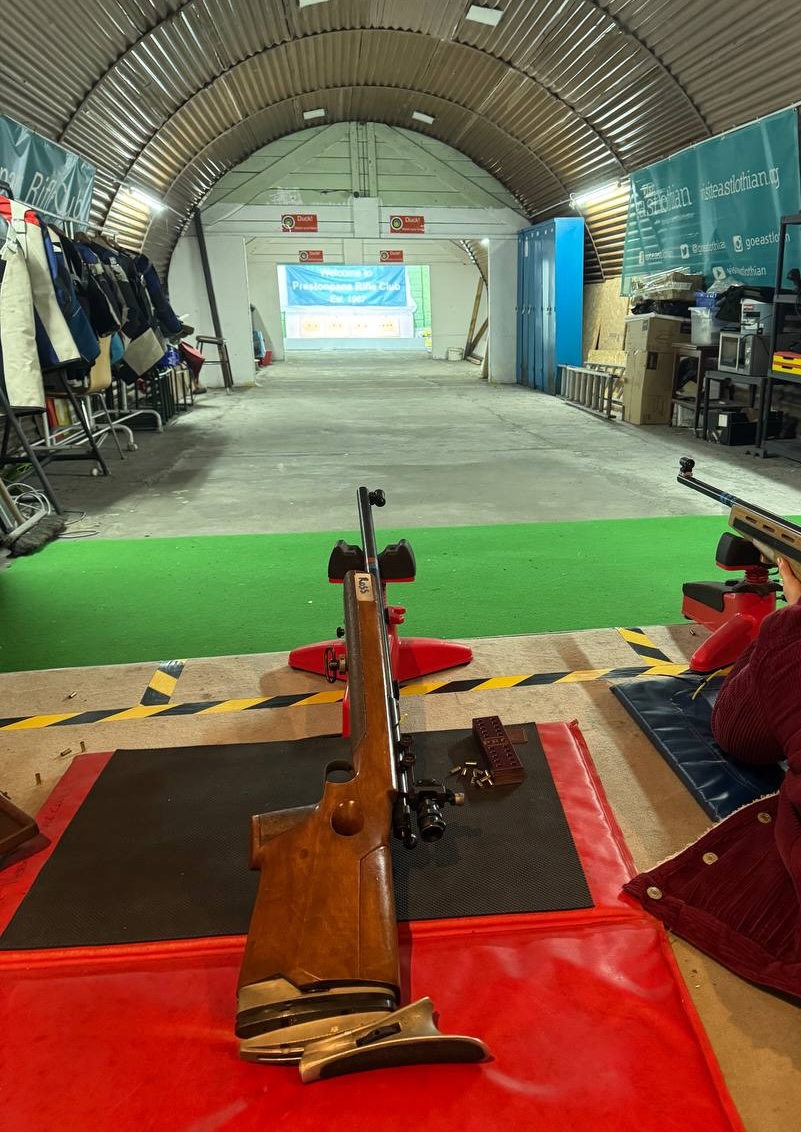
That being said, seems like once I nail the basics, I will be good to go for my certification, getting the firearms license and a safe, and then slowly reaching out to the nearby estates to see if they need help with their deer problems.
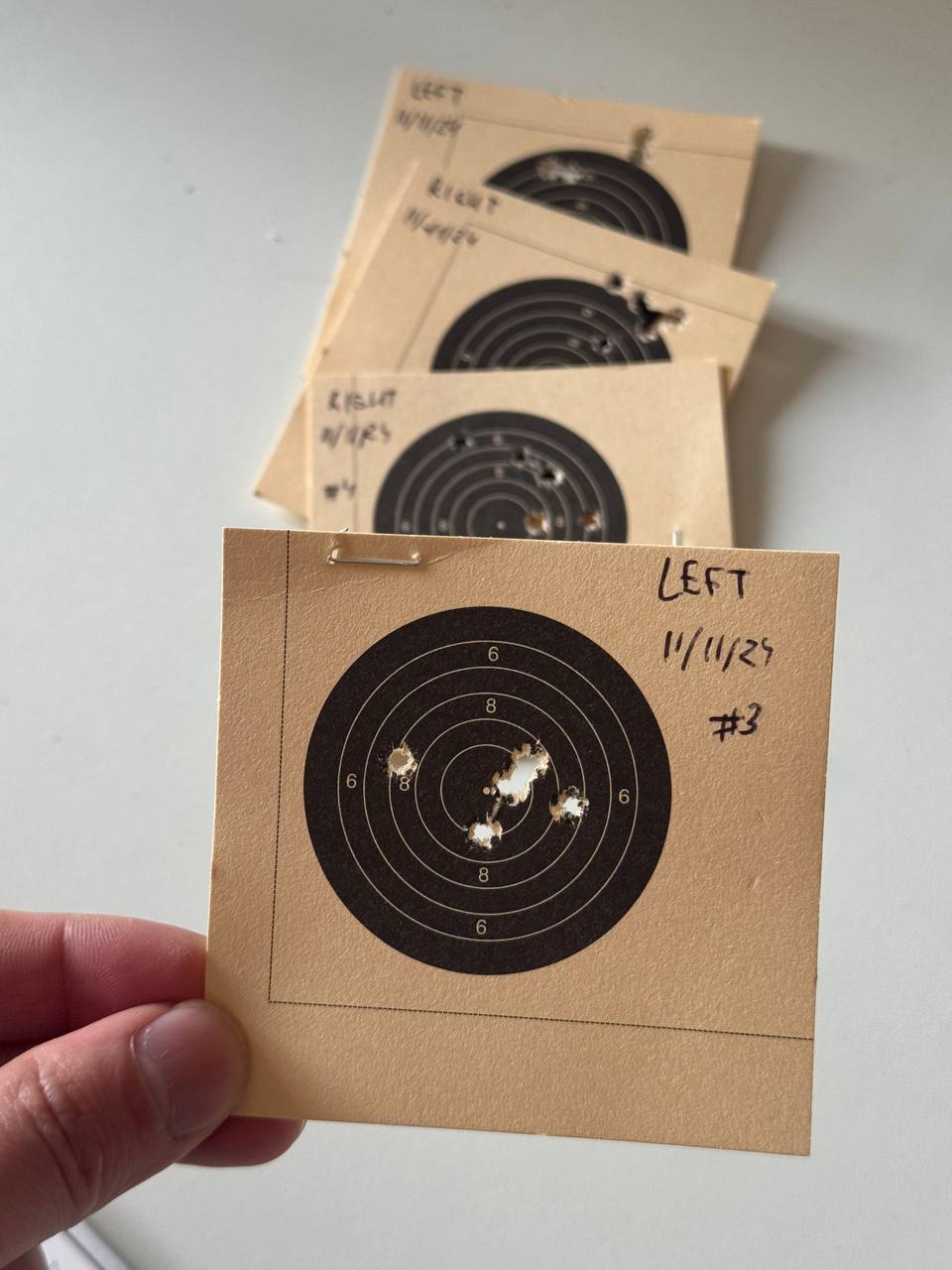
Maybe not next year though, but we will see how much time it takes for someone starting from sratch.
Things I enjoyed reading
I love thought-provoking essays, and this is a great example of one. The author argues about social changes mechanisation brings, but uses olive oil as a medium: before machines, not only it was available to certain groups of society, but even its flavour was different (because pressing fully ripen olives was easier).
Then as now, mechanisation and automation are not neutral. They never are. They do not just speed up older ways of doing things. Historically, they always mark transformations that are social as well as technical. In the case of 18th-century oil technology, what was transformed was not only the machinery but the nature of the product – and of the social world and economic power structures organised around it. New mills and the new oil were not self-evident goals, nor were they determined by an ineluctable technological trajectory. Rather, they were the contested outcomes of a reorganised social life that dictated, among other things, who should benefit from oil production, and how.
One could easily draw parallels with many other modern inventions, from the Internet to mobile phones and see how they're shaping our world in many ways, not necessarily the ones they're intended for.
And building up on the topic of mechanisation, this is another argument agains the spread of technologies (even if that's not necessarily what the author wants to convey).
They're still evoking this image. Their ads featuring grandparents who don't have to feel alone because the family can videocall, or students quickly finding out facts for their assignment, neighborhoods organizing via their platforms, the image of tech enhancing the family life with grocery lists and drawings and games for the family! Nevermind that most of these are pretty dystopian if you sit and think on it. But more people are picking up on it now as it gets more overt, more apparent, that the marketing people and higher ups in tech seem to live in a bubble detached from the reality of millions; not realizing that a spot featuring how AI is writing the fan-letter for a child is not cute, not innovative or something to strive towards.
Personally I don't have much against the world Matrix the movie have portrayed so well a few decades ago: why spend hours flying in a tiny steel box to see another country, when you could put VR goggles on and transport to the other side of the globe in a matter of seconds, minus all inconveniences of heat and jetlag?
I wrote about LLMs, AI, and chatbots at lengths already; I am slightly worn down by now, partly because my career has involved writing code for chatbots and messengers in one way or another for more than a decade, but I do appreciate the variety of opinions on using "AI" for writing code:
But LLMs are of a piece with all of this. They write both English and code with no shame or attempt at concision. So much of it, too much! You might want to use another LLM to understand the code that you’ve written. And another to refactor it. Say what you will about the mountains of technical debt at your average startup, but that technical debt was hard-won, written by hand over the course of years. With modern tools, we can greatly accelerate that process. Do we want to accelerate that process?
My experience with those systems was somewhat mixed: Copilot and Cursor didn't do much for my mobile development needs, and Windsurf was great 90% of the time, but the other 10% were more damaging than useless. This is pretty cool for rapid prototyping nonetheless, but on the condition that you will rewrite everything once the prototype is ready, as otherwise it just is not sustainable.
Occasionally the things I read reflect the things I am interested in at this particular moment in time, mainly because I am constantly going through a rabbit hole of similar articles and targeted ads, but this is a partly creepy partly hilarious story about someone finding a switch in their car not referenced in any manuals.
Those do not appear in the manual, or the website, or anywhere. What could they be? Just flipping the switch does nothing, apart from turning off the light on the switch. So let’s look where the button goes. I can see that part of it is wired to the back of the OBD2 port (a port that retrieves data from the onboard computer about the car, such as pedal position, temperature, lights, rev count, speed - basically if you can see it on your dashboard it can be read using the OBD2 port), so it is getting information from the car, but apart from that the wires go to places that I can’t see without taking the car further apart.
Such a shame it wasn't a secret nitrous toggle like in Fast and Furious.
This is definitely not the first time I come across an article about some old note-in-a-bottle encounter, but this is probably the first one where the authors managed to dig deeper and tell the whole background story of people who wrote the note and hid it in a lighthouse in the 19th century.
The bottle containing the note was found by Ross Russell, a Northern Lighthouse Board mechanical engineer, during an inspection.
He spotted it after removing panels in a cupboard but it was well out of arm's reach. The team retrieved it using a contraption made from a rope and a broom handle.
He said he was blown away to find out about the men who had written the note.
The only thing that'd make this story even better would be some treasure map.
I don't remember when I learnt that modern time is driven by atoms, not sun, but it shook me to the core – because the sun still drove the time changes for me, and to an extent it meant that those scientists and I are living with a very different clock. And now the want to take my time as well:
There is no debate that the second should be redefined. The question is as what. It is a weighty issue, especially because the second is the most fundamental of our fundamental units. In addition to the second, BIPM co-ordinates the definitions of six other base entries in the International System of Units, or SI. They are the ampere (current), candela (luminosity), kelvin (temperature), kilogramme (mass), metre (length) and mole (amount). Five of these depend, in turn, on the second. A metre, for example, is the distance travelled by light in a vacuum during a tiny fraction of a second. A new second will mean five other new units too. “Two sentences can turn into a laboratory and 50 years of iterative work,” Sherman had said of the current definition of a second. “So, ‘simple’ sort of never is.”
I guess the good news is, all of these fundamendal definitions don't really change how things work. Otherwise Y2K would seem a walk in a park.
I thought this would be one of those nostalgic articles reminiscing about the bright flavours of apples in one's childhood that became very much dull by now, so was a bit surprised to come across the title like this one on Serious Eats, but quickly got humbled:
The fruit’s extraordinarily thin skin may be pleasant for biting through, but it also means the apple is prone to sunburn, in which the parts of the apple that get more sun exposure experience what scientists call “tissue collapse,” causing the fruit to turn brown or black. The delicate skin also makes it time-consuming to harvest: To prevent the apple’s sharp stems from puncturing neighboring apples in storage, the stems must be clipped extra-short. “Now, if you only had to do a couple hundred of those a day, no big deal,” Bedford muses. “But when you’re picking hundreds of thousands of these things, that slows down the picking process, which increases your costs.”
I wonder what else went downhill as much over the years then, but due to natural causes. Soviet Plombir?
I had no idea one could drive around the world so quickly – even though occasionally they had to pay loads of money to get the car transferred between continents, but this story is very impressive nonetheless:
The Guinness World Record rules at the time were that the same driver had to be behind the wheel during the entire time, Sowerby decided to take on that role while Langley decided to be the navigator.
The pair also had to drive the circumferences of the earth (26,738 miles) and cross the equator at some point.
Flights wouldn’t count in the final mileage tally, but the clock would still be ticking while the duo was in the air.
I went to look up what's the current record then, given this one was set 40 years ago. Someone beat them in 2001, but since then this particular Guinness World Record was discontinued.
The official reason? Introduction of speed limits.
This is another story about finding something hidden in the past, albeit this time it's a part of an Edinburgh street: pretty cool that now it could be used to learn more about the way the town looked like centuries ago.
Robbie Mitchell, a reference assistant at the library, said that inside the passageway you could see the brickwork of the library's lower levels and the bridge’s stonework.
"Although not a preserved street like Mary Stair's Close, this nevertheless offers us a glimpse of the Edinburgh of centuries ago,” he said.
This is also the first time in my memory the same author is featured twice in the same week's edition. Yay!
Some people are born with a genetic mutation – Familial Natural Short Sleep (FNSS) – that allows them to sleep a few hours less than the recommended 7-9 hours without experiencing any negative effects of sleep deprivation. It sounds pretty cool, so someone is trying to find a way to replicate the mutation for themselves:
Fortunately, there is no risk of the mutation being passed down to offsprings in either the orexin agonist pathway or the gene therapy pathway. So we can rule out the nightmare scenario of offspring effects gone wrong. Instead, the risks are concentrated in medium to long term health of individuals who undergo therapy. As of now, we simply don’t have enough data to profile risk factors. More experiments are needed to know if “FNSS for all” is too good to be true.
Even though most scientists seem to think that this particular mutation is benign, it doesn't really explain why such a small fraction of the population has it. And also life expectancy seem to be shorter for people with FNSS although there is no enough research on the topic.
That being said, gaining 2 hours of spare time every day might easily make up for that.
Things I didn't know last Tuesday
I am pretty sure I invented this when I was a kid and adults around thought I am nuts, but now I know I was very close to something patented:
After five minutes of that, the machine would then fill the chamber with hot water for a three-minute ultrasonic bath. This was followed by a two-minute hot rinse cycle. Next, the chamber would drain and the user was blasted with warm air to dry off. They were additionally exposed to both infrared and ultraviolet light to kill germs. All in all, it was a 15-minute cycle.

I wonder how much research there is on the topic of putting human beings into ultrasonic baths. There definitely must be some.
I already mentioned a few rather specific cafes unique to Japan in some of the previous editions, but his one is a new one for me:
Unique to Japan, jazz kissa are spaces where jazz music is played for dedicated listening rather than as background music. A typical jazz kissa features a high-quality stereo system, a large music collection and dim lighting, and serves coffee and alcoholic drinks.

That being said, I am not a huge fan of jazz, so that won't be the first Japanese cafe I'd visit.
There is a decent selection of seafood in Italy, but Rome didn't strike me as a seafood city until now:
Overwhelmed by the crabs, archaeologists hauled buckets of them out of the earth during excavations. Known scientifically as Potamon fluviatile, these crustaceans are the only large freshwater crabs indigenous to Italy. Researchers suspect that the population’s heritage is ancient, dating back to when Rome wasn’t much more than a marshy valley.
Ironically, and that's where Rome meets New York City I guess, the only predator these crabs have is rats.
I don't really understand the folks that get all cute with babies, mainly because let's be honest here – babies are ugly. If someone tells you otherwise, that person is exceptionally polite, and you shouldn't trust anything they say from now on.
But now I have another argument to use with people who offer to touch their babies:
The herpes virus infection is one such example. In adults, herpes causes cold sores, but babies can quickly become seriously ill after catching the virus. If the herpes only affects the baby’s eyes, mouth or skin, most will recover after antiviral treatment. But if the virus becomes systemic and affects the baby’s organs, the infection is much more serious and can even be deadly. The younger the baby, the more vulnerable they are to infection by herpes, particularly in the first four weeks after birth.
THe author of the article then goes onto describing how to show affection to a baby without kissing them. I didn't read that part, but I am pretty sure the most sensible advice is to gift a baby some Apple stock or cryptocurrencies.
This might seem like a very generic definition:
Barmbrack, also often shortened to brack, is a yeast bread with added sultanas and raisins.
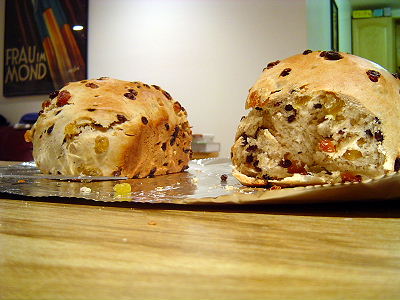
Some sources also claim that Irish originally made the yeast base (barm) out of potatoes. On one hand, it'd make sense given the country, but on the other hand I couldn't find a single mention of this practice, so tend to think raisins were the actual source of yeast instead.
Walt Disney wanted to open a ski resort but even though it didn't happen he managed to come up with a way to mark ski routes:
The solution came less than three years later, when NSAA discovered that the Disney Company, which was thinking of buying or building a ski resort (Mineral King in California was one), had gotten as far as determining what kind of trail signs it would adopt. The company had even tested skier’s reactions to different geometrical figures, concluding, for example, that a symbol for easy terrain should be a circle, perceived as soft; its color should be green, perceived as mellow. More difficult terrain would be indicated by a blue square, and most difficult by a black diamond. NSAA saw the Disney formula as an improvement, and switched to today’s shaped colors in 1968.
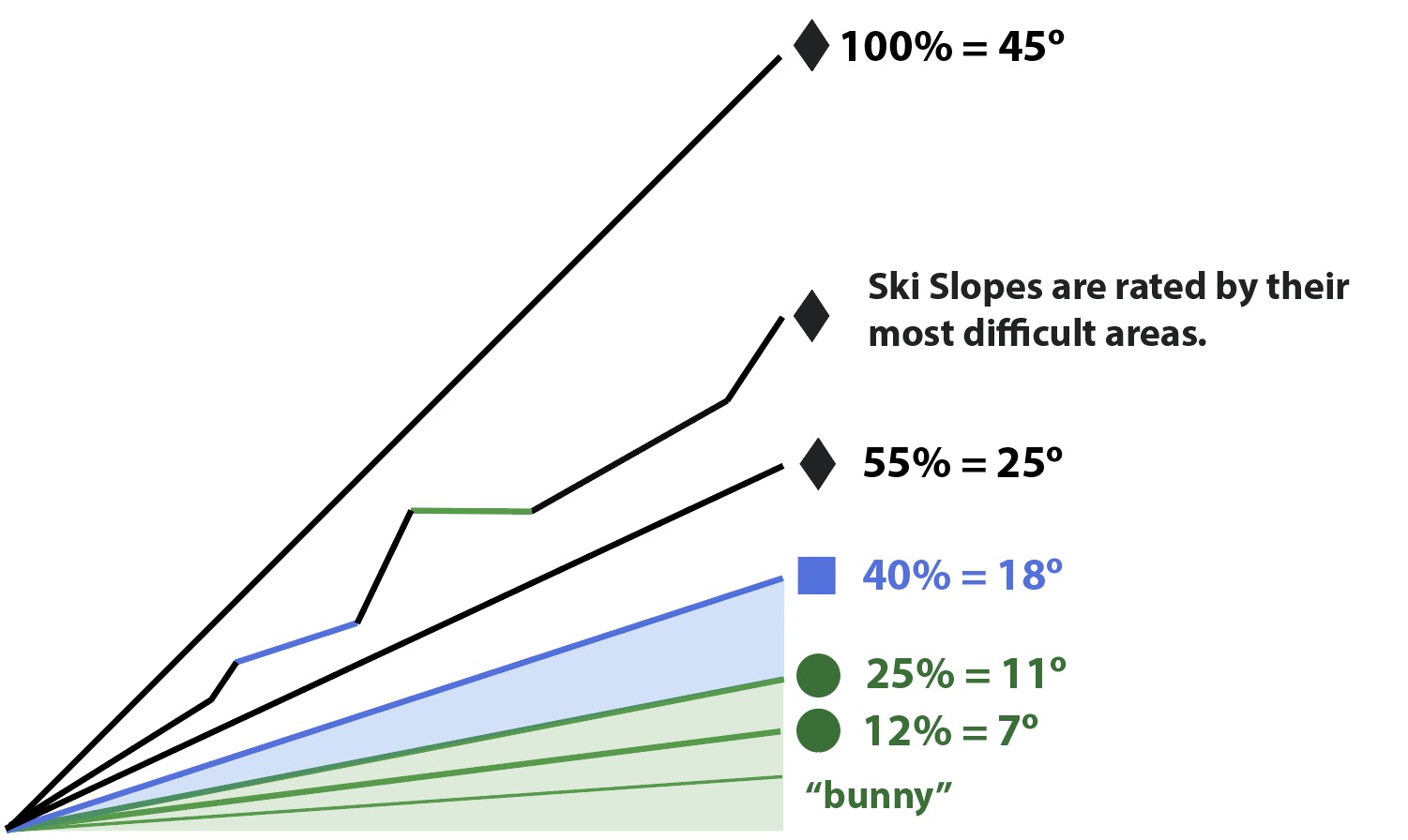
I haven't been to the slopes for more than a decade, so that must be a yet another nod to Walt's genius.
If you think listening to White Christmas on repeat for two-three months is not traumatising enough, welcome to an Austrian festival:
There were already established pagan traditions in the Alpine regions that became intertwined with Catholicism. People would masquerade as a devilish figure known as Percht, a two-legged humanoid goat with a giraffe-like neck, wearing animal furs

These folks look quite epic, and in some parts of the country people make hand-woven costumes out of oak leaves, which seems to be a huge commitment for something so spooky.
People tend to overinflate tyres but someone tried to do the opposite and came up with a pretty cool thing:
Rolligon is a trademark name for large, low-pressure tires, designed to traverse the soft ground surfaces of the tundra. The product was invented by William Albee in 1951 after he had seen Inuit using inflated seal hides to drag a heavy boat on shore.

I also wonder what exactly did Inuits do to seals to make inflated hides out of them.
People either love Five Guys burgers or hate them, but pretty much everyone loves their chips – partly because ther is always so many of them.
If you've ever been to a Five Guys location, then you know that regardless of what size you order, there's always a "topper," which is that extra scoop of fries piled into the bottom of the bag. According to PopSugar, the idea behind giving customers so many extra fries is that the guests think they're getting a great deal. The extra fries, however, are factored into the menu pricing, so it really is just an illusion of receiving more than your money's worth.
I kind of suspected that it happens on purpose and is accounted for in the prices, but it's pretty cool to learn the reasoning.
I occasionally come across things that are more expensive than I thought they would be, like printer ink being more expensive than blood if you buy by litre, but that's probably the first time I see something literally priceless.
The value of kyawthuite is currently listed as priceless. The world's second-rarest gem, a mineral called painite, is valued at US$50,000 to $60,000 a carat.
The reason is, a peace of this kyawthuite was found only once in history, and is stored in a museum, so it'd by quite hard to put a tag on it. I wonder what's on their insurance slip though.
Book of the week
I've been doing some research for the past week or two, and part of it was investigating peculiarities of Icelandic cuisine. The further up North you're the harder it is to cook, especially if you're after something more or less refind, as you have to work with very limited ingredients.
On the other hand, nature's help becomes more prominent, even if you urgently need a large but unpredictable oven or just looking for vast amounts of freezing space, and Gunnar Karl Gíslason's North is a great example of that.
It’s easy to miss the lids. Their rusted metal surfaces blend so completely into the surrounding moonscape that only their rounded handles give them away. When lifted, the heavy covers reveal what at first appears to be nothing but a hole in the ground, until the geothermal smoke plume billowing up from inside clears to reveal more to the story. These are the geyser bread ovens of Iceland, passed down from one generation to the next, where sweet, dense rye bread known as rugbraud, or “geyser bread,” has been baked in the same way for centuries.
The landscape on the north shore of Lake Mývatn is streaked in heaving, alluvial swirls of flaxen and rust that break at the edge of electric blue geothermal pools. The ovens rise above the lake on a gently sloping hill, where clouds of geothermal heat never subside and it is possible, even on the harshest winter day, to find warmth by standing in them. For generations, bakers of all ages have trudged through the countryside with their metal tins, waxed milk cartons, and, most recently, white plastic buckets filled with malty brown dough. In the past, every family had its own bread recipe, but modernization and inertia have battered that once-solid tradition.
Bakers still come to the geothermal ovens of Mývatn, though admittedly in smaller numbers. They do not arrive on foot as they once did, but they still carry their dough with them to their family ovens, where within twenty-four hours it is transformed from a thickened mass that looks like gingerbread into a dense rye loaf. The dough cooks slowly in the humid earth, absorbing the terroir of the unique topography. When the bread is ready, veteran and novice rugbraud bakers alike know that the best way to eat a slice is hot from the oven, slathered with creamy butter. It has been eaten this way from the beginning, and there is no point in fooling with perfection.
It's a bit of shame that these days there are less and less of these geothermal ovens in use, and many people resort to slowly baking the bread overnight in home ovens, which is definitely more accessible but not as fun.
I didn't know much about Icelandic cuisine before opening the book – only some background from Wikipedia articles and prior experience with food in countries where it's often too cold to grow things, but I am very much looking forward to learning more about it, as the author managed to highlight how many wonderful things were invented out of necessity, even though many parts of Europe would probably steer away from eating horse steaks and smoked puffin breasts.
Well, there will be more left for me then.
Thank you and see you in a week
(or in a month)!
If you'd like to support the newsletter, please subscribe to the weekly plan. Otherwise you will keep receiving the letters on a monthly cadence – no need to do anything to opt-in.
If you have any questions, or want to suggest a link for the next newsletter, please drop me a message on Twitter or reply to this email.
Cheers! 🍸
|








